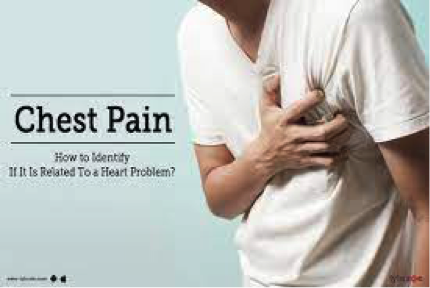


Post Covid Complications:
12. Chest pain:
Chest pain are some of the most common symptoms experienced during the recovery phase of COVID infection. Having experiences of chest pain after COVID can be worrying but usually not life threatening.
Types of chest pain
• Non-specific/non-cardiac chest pain
This can occur anywhere in the chest. The location may vary during repeated episodes. However, it is often felt in a localised area just below the left nipple. It may be sharp or dull. It can last a split-second to hours in duration. It is not bought on by physical activity. Causes for this type of pain are rarely identified.
• Musculoskeletal chest pain
This pain may be limited to a small area or to a particular area or be felt as more widespread muscle soreness (called myalgia). The affected area is tender to touch and made worse by specific movements such as turning of the chest or stretching. Myalgia is common during acute viral infections such as COVID and, together with non-specific/non-cardiac pain, may be experienced during the COVID recovery illness. This type of pain can also be associated with trying new exercises (e.g. push ups).
• Pleuritic chest pain
This type of pain is sharp and worse on breathing in. It usually points towards an inflammation of the pleura (the lining of the lungs, causing pleurisy) or of the pericardium (the lining of the heart, causing pericarditis, in which case the pain is normally made worse by lying flat and relieved by sitting forward). It is treated with simple painkillers such as Paracetamol and anti-inflammatory medicines.
Severe COVID infection may trigger inflammation of the heart muscle, a condition called myocarditis. This is looked for routinely in people who are advised to attend hospital for severe COVID symptoms.
Pain from the lining of the lungs may be caused by, a blood clot (pulmonary embolism) in one or more of the arteries supplying the lungs. The onset of pain is usually sudden and may be experienced with other symptoms, such as shortness of breath. It is important to diagnose this condition so that blood thinning treatment can be started to prevent further episodes.
• Angina-type chest pain
Angina is the most common symptom arising from narrowed or blocked heart arteries. It is typically experienced as a constricting feeling, a tightness or heaviness across the chest. It may radiate to one or both arms, to the neck, jaw or teeth.
Stable angina is triggered by physical activity such as walking quickly or running, walking up inclines, or climbing stairs. It is relieved rapidly by slowing down or resting. It tends to be worse in the cold.
Unstable angina is the worsening of symptoms in previously stable angina, and usually occurs at low levels of activity or at rest. Pain due to a heart attack is of similar in nature to angina, but it is usually more severe and ongoing, and may be associated with nausea, vomiting, sweating, anxiety, and feeling unwell.